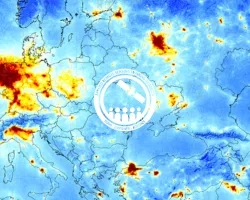Description
Synthetic Aperture Radar (SAR) has the capability to observe the Earth's surface both day and night and through most weather conditions, making it an ideal sensor to support a wide range of science and applications. Additionally, unique capabilities of SAR include its ability to penetrate through various mediums (such as vegetation, snow, and soil), measure surface deformation and small movements on the order of centimeters, and its sensitivity to structure and to moisture content. These capabilities are valuable for monitoring vegetation structure and land use, detecting surface deformation and movements in land (e.g., earthquakes, landslides) and ice (e.g., glacier movement), flooding, and soil moisture, to name a few.
Historical and operational SAR data have been used to support numerous science and applications questions and needs. However, upcoming SAR satellite sensors, such as NISAR and BIOMASS, will enhance these capabilities with their unique observing frequencies and spatial and temporal resolutions.
This online webinar will provide an introduction to SAR, including interferometric SAR (InSAR), as well as a review of the characteristics of historical, current, and upcoming openly available SAR satellite data. It will also explore the type of applications that each sensor can best address. Additionally, this webinar will discuss online sources of openly available SAR data, along with tools, software, and other resources to understand, explore, and facilitate the analysis of SAR data.
This training is also available in Spanish.
- Fundamentals of Remote Sensing
- Participants should create a NASA Earthdata account prior to the start of the training by visiting the Earthdata Login sign up page.
By the end of this training attendees will be able to:
- Recognize basic features and functionality of Synthetic Aperture Radar (SAR)
- Evaluate SAR sensor characteristics for addressing different science questions and application areas
- Interpret the information content in SAR images to distinguish different features (e.g., vegetation, water, inundation) detected by the sensor
- Evaluate creation of an interferogram through interferometric SAR (InSAR)
- Interpret an interferogram to measure surface deformation and small movements
- Compare and contrast the capabilities of historic, current, and upcoming SAR data
- Access and visualize SAR data for a given location and time
Remote sensing end users, geospatial analysts, academics and students, managers from local, state, federal government, and NGO’s.
- Three, 2-hour parts
- Each part includes a 30-min Q&A session.
- Each day of the training will have an English session from 11:30am-1:30pm EST (UTC-5:00) and a Spanish session from 2:30pm-4:30pm EST (UTC-5:00).
ARSET Instructors: Erika Podest
Objectives:
- Identify radar remote sensing signal characteristics
- Recognize how the radar signal interacts with the surface
- Interpret a SAR image to distinguish different features (e.g., vegetation, water, inundation) detected by the sensor
- Identify application areas where different SAR sensors are most applicable
- Compare and contrast the capabilities and characteristics of historic, current, and upcoming SAR data
Materials:
ARSET Instructors: Erika Podest
Guest Instructors: Eric Fielding (JPL)
Objectives:
- Identify the basics concepts of Interferometric SAR
- Identify the steps to generate a SAR interferogram
- Interpret an interferogram to measure surface deformation
- Identify the applications that InSAR can address
Materials:
- Presentation Slides
- To follow along with today’s demonstration, please visit the Github linked here. Setup of the provided notebook and environment requires prior knowledge not covered in this introductory-level training. Participants are not expected to replicate the demonstration.
- Q&A Transcript
ARSET Trainers: Erika Podest
Guest Instructors: Franz Meyer (ASF, University of Alaska, Fairbanks), Heidi Kristenson (ASF)
Objectives:
- Access openly available SAR data from the Alaska Satellite Facility (ASF) Distributed Active Archive Center (DAAC)
- Explore tools to visualize and download openly available SAR data from the ASF DAAC
Materials:
- Presentation Slides
- Q&A Transcript
- Homework (Due December 4)



